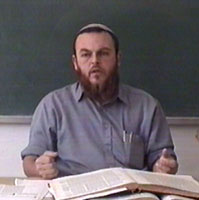Beit Midrash
- Sections
- Chemdat Yamim
- Bemare Habazak - Rabbis Questions
I recently saw a product that I would call a "plata blanket" (a thick covering designed to go over the pot(s) that sit on the hot plate or blech). How can these be used on Shabbat without problems of hatmana (insulation)?
Answer: [Before putting a fabric on a heat source, one should determine that there is no fire hazard.]
Hatmana is forbidden rabbinically on Shabbat (not including other problems) in two basic circumstances: 1) if the hatmana is done on Shabbat; 2) if the hatmana is done in a medium where heat is being added, even if set up before Shabbat (Shulchan Aruch, Orach Chayim 257:1). Regarding your question, since the covered food is sitting on a heat source, even if you set things up before Shabbat, you must cover the food in a manner that is not hatmana.
Insulation is forbidden as hatmana only when the covering is done in a relatively extensive manner. Two pertinent parameters are the percentage of the pot that is covered and the proximity of the cover to the pots.
The standard assumption is that it is hatmana only if virtually the entire pot is covered. It is sufficient for a somewhat significant amount of it is exposed to prevent problems (see Orchot Shabbat 2:80). (There is an opinion that if the majority of the pot is covered, it is hatmana, but this is against the consensus.) Depending on the size of the pot(s) and of the covering, it is possible that there will be parts of the bottom of the pots that will not be covered, and, in any case, one can be careful to make it so and thereby solve the problem.
Another factor in insulation is the degree to which the covering hugs the pots. The Rosh (Shabbat 4:2, accepted by the Shulchan Aruch, OC 257:8) says that if the covering is not directly on top of the pots but it is suspended by a board above it so that there is significant air in between, it is not hatmana. The same is true if there is significant space between the covering and the sides of the pot(s) (Shulchan Aruch ibid.), even if it touches some sides but not others (Shemirat Shabbat K’hilchata 1:66). Let us put things in perspective. If there is more than one pot, the covering will never touch all the sides of all the pots, as there will be sections facing inward, and the covering will probably not hug the whole exterior, considering the shape that will be formed. One should look at the pots as a group, and if the pots as a group are covered as normal when draping a cover over them, this is hatmana (Orchot Shabbat 2:(144)).
There are at least three ways to have the "plata blanket" pass this test. 1) I have seen such products that are stiff so that they do not turn at an angle that would allow them to hug the sides of the pots. 2) One could put a board on top, extending beyond the pots so that the blanket will turn vertically beyond where the pot reaches (Shulchan Aruch, ibid. 3) One can put an empty pot on one side to separate the blanket from the relevant set of pots at least on that side (Orchot Shabbat, ibid.).
There are two legitimate but not mainstream opinions that should be mentioned in this context. The Shulchan Aruch (ibid. 8) says that it is forbidden to do partial hatmana. While his main discussion is when it is sitting on coals, it appears that even when sitting on a blech, partial hatmana is forbidden. Therefore, there is significant logic for Sephardim to be machmir in this regard. However, the minhag among Sephardim seems to be more lenient than the Shulchan Aruch (see Ohr L’tzion II:17:10 and Yabia Omer VI:33).
The Ohr Zarua says that if one seals before Shabbat the oven in which the hatmana is taking place so that one is not going to forget and stoke the coals, there is no prohibition of hatmana (see Rama OC 257:8 who accepts this and the Mishna Berura ad loc. 47, who is inconclusive). Rav Ovadia Yosef (Yabia Omer ibid.) says that the same leniency applies to a non-adjustable hot plate. Nevertheless, it is better to follow one of the steps above to prevent hatmana issues.

Bemare Habazak - Rabbis Questions (629)
Various Rabbis
34 - Use of a Rickshaw on Shabbat
35 - Covering for Food on the Hot Plate
36 - chezkat chalavi
Load More

Ask the Rabbi: Transporting Children before or after Shacharit?
Rabbi Daniel Mann | Kislev 5786

Ask the Rabbi: What May One Do before Havdala after Yom Kippur?
Rabbi Daniel Mann | Tishrei 5786

Ask the Rabbi: Keeping Bread on the Table
Rabbi Daniel Mann | Iyar 5785


























